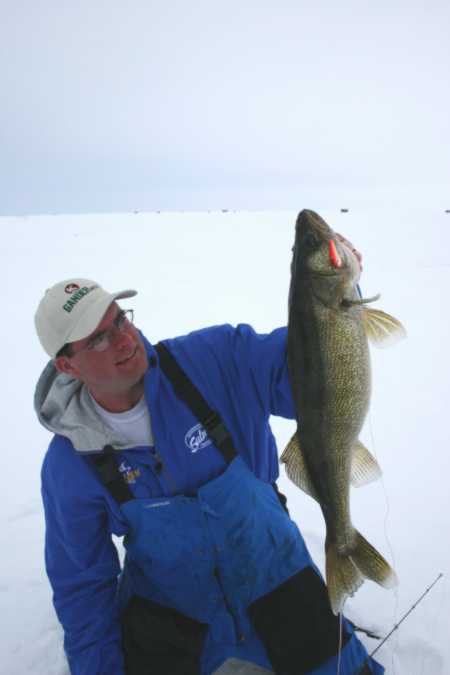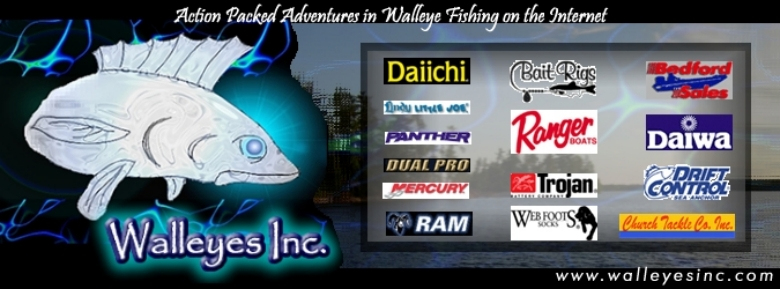Usually, ninety percent of the fish are caught during ten
percent of the time we are actually on the ice. There are windows
of opportunity. More often than not, the low sun of morning
and or evening signal this opportunity.
 |
There is a prime time when everything happens so to
speak… that window where walleyes are on the move
and eating. When this opportunity does present itself,
traditional and aggressive presentations can work better
than anything. A fish that is running a predictable route
is easy to find and fish that are eating every thing they
can catch are fairly easy to catch. Real aggressive presentations
like Chubby Darters or blade baits might shine in this
scenario. For tweaking some of the somewhat aggressive
fish, some of the more traditional swimming lures and
spoons tipped with a minnow head maybe all you need many
days. The actions and moves may be pretty straightforward
as well. Hard rips and snaps might bring fish in for example
while hard pounds and other subtler bobs get the treble
hook to rock and stop spinning just long enough to get
gulped down. The bites feel like punches at the lure.
The bottom line is that when the bite is on, the hits
are easy to distinguish and the fish often seem to react
fairly positively to any move you make. |
The reality is the bite is never on forever. At best, we might
have a two-hour window in the morning or evening where the fish
are fairly aggressive. What we have found is that many anglers
are geared and can catch aggressive walleye during this prime
time but are often too stubborn to make the adjustments as the
sun gets higher. We can catch many more walleye by extending
the bite beyond when the fish are cruising and eating during
low light conditions.
The morning bite on the water we fish for example can often
taper in intensity. The action just doesn’t flip off like
a light switch but rather tapers off. The fish will be hot and
aggressive for a short period of time before you enter a period
of time where there are fish still lingering around, showing
up on your electronics but just much harder to trigger. Often,
the aggressive presentations still bring these fish in but these
fish seem to put on the brakes just at the moment of truth before
sinking back down to the bottom.
There is another window of opportunity for catching fish that
revolves around the manic movements of sunrise or sunset that
shadows the prime time event. Before or after the mayhem, we
can often continue to catch fish by making the right adjustments.
These adjustments are using presentations often associated with
perch or panfish. Many anglers have a hard time mentally making
this adjustment. A teardrop packed with wax worms for example
can be the hottest ticket on the ice once the sun gets higher.
Some anglers catch walleyes on these panfish offerings and assume
the fish is a fluke, wrong. We have found that we can fool fish
into gulping down these tiny offerings when they ignore traditional
walleye tackle that is 'suppose to work.' Basically, we can
extend our window of opportunity. Instead of picking off a few
aggressive fish at sunrise and sunset, we can continue to trigger
fish over a longer period of time. We can often catch fish much
later into the morning for example. A Lindy Fat Boy for example
tipped with a minnow head is my go to bait when fish start showing
up and not eating. The small stuff isn’t a cure all presentation
or even a presentation to start the day with. But when you are
on fish and have passed through that prime time so to speak,
you can often pick off a few more fish by scaling back and down
to presentations often intended for panfish.
Editors Note: The author Jason Mitchell is a highly respeced
ice angler and legendary guide on North Dakota's Devils Lake.
Mitchell has also designed a premium lineup of ice rods endorsed
by Ice Team, www.jasonmitchellrods.com.
|

